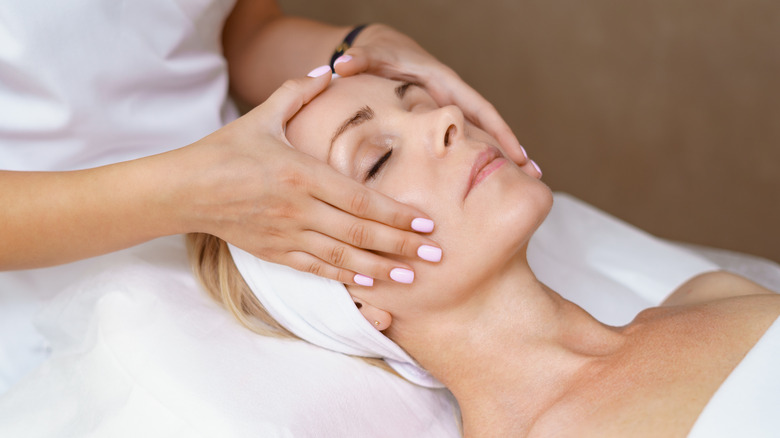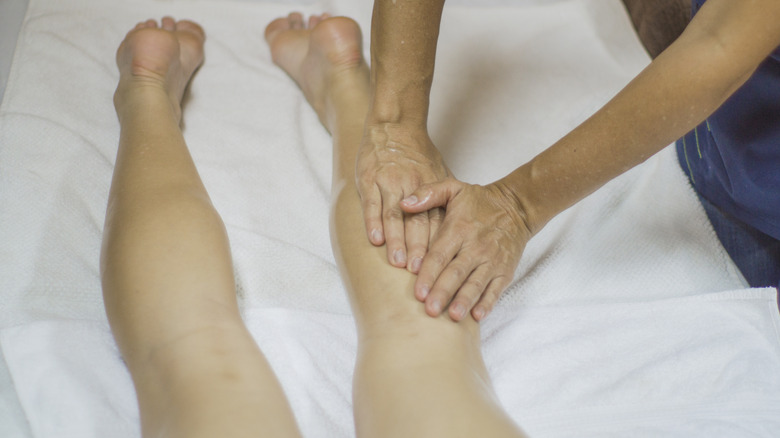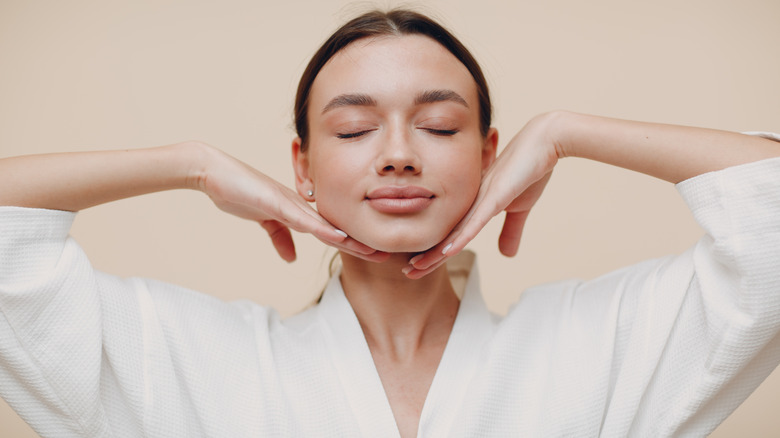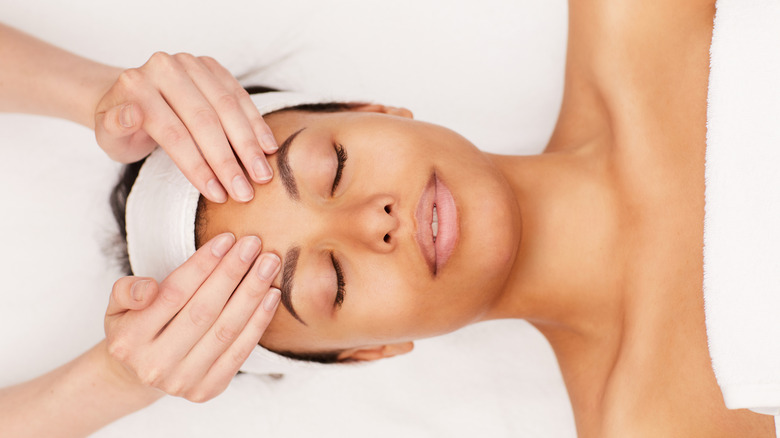Can Lymphatic Drainage Massages Help Reduce Facial Puffiness?
In urban spas, lymphatic drainage facials often appear on menus of services. Sometimes they are standalone offerings, listed between chemical peels and microdermabrasion, but usually, they are a la carte add-ons for supplementing another type of facial. Always there are promises of toned skin and reduced under-eye puffiness.
The photos look convincing, but does it work? To answer this, it's important to understand the origins of this massage. Let's begin with a better comprehension of the body.
The lymphatic system has many functions, including protecting your body against foreign invaders and balancing your body's fluid levels, according to Encyclopedia Britannica. As part of the immune system, this network of tissues, vessels, and organs collects from tissues any excess fluid that's been left behind by plasma flowing through your circulatory system and then it deposits this fluid, called lymph, back into your bloodstream. Your body contains thousands of lymph nodes (or glands) that serve as filters along the lymphatic channels. The nodes are made of tissue and contain lymphocytes, white blood cells that help fight infections. As fluid flushes through the system, the nodes remove damaged cells as well as foreign materials, such as infectious bacteria.
A popular treatment
The lymphatic system, then, functions as a bodily sewer and, like any plumbing, it can get clogged due to blockages, disease or infections. Lymphedema is a condition where an accumulation of lymphatic fluid at a juncture in the lymph system has resulted in swelling. Lymphedema mostly affects the arms or legs and is frequently the result of cancer or cancer treatments, including surgeries. There's no cure for this condition, but the problematic fluid buildup and swelling can be treated in various ways, according to the Centers for Disease Control and Prevention. Lymphatic drainage, a light massage technique that encourages movement of lymph fluid, is one such treatment.
Emil Vodder is credited with developing Manual Lymph Drainage, the technique on which lymphatic drainage facials are based.
After studying biology at the University of Copenhagen, Vodder sought to understand the complex anatomy and physiology of the lymph vessel system, which circulates throughout the body including the head and face. Based on engravings by an anatomist, Vodder created a unique massage modality, where light pressure, supplemented by pumping and circular motions, is applied to the lymph channels. In 1936, Vodder premiered his Manual Lymph Drainage method for his peers and critics at a scientific conference. Though his new method wasn't immediately embraced, two decades later, Vodder had developed a following of students across Europe. Today, physical therapists around the world rely on his systematic massage technique to optimize lymphatic circulation.
Beyond physical therapy
Though it is considered effective as physical therapy, lymphatic drainage has not yet gained unanimous scientific support for use in the spa.
For example, research conducted by Professor Nobuyuki Takakura of Osaka University in partnership with Shiseido Co., Ltd., the Japanese beauty products company, reveals that defective functioning of lymphatic vessels can lead to accretion of fat beneath the skin's surface, which leads to flabbiness. This research attributes the problem of sagging skin to poor lymphatic flow, yet the authors do not go so far as to say that facial massage will tone sagging jowls or reduce puffiness beneath the eyes.
Nevertheless, other experts agree with Takakura's theory that lymphatic system dysfunction leads to skin problems that show in the face. A Journal of Clinical Investigation article highlights the opinion of Dr. Michael Detmar, a dermatologist, who observed that aging combined with sun damage can result in fewer lymphatic vessels and this, in turn, leads to deteriorating lymphatic drainage. "You might be able to make a case that you could reduce fluid buildup by having a facial to encourage drainage when your skin has fewer lymphatics. So promoting lymphatic flow can have benefits," he said.
Instantaneous yet transitory effects
Also in agreement with this theory is Dr. Jennifer Levine, a plastic surgeon. She told Self that lymphatic drainage massage facial could reduce puffiness by boosting lymph circulation, but any effects will be temporary. "There's anecdotal evidence that this kind of massage will move the fluid, but that doesn't mean it's not going to come back," she said. Levine added that some therapists recommend lymphatic massage for the face (and also the body) after certain plastic surgery procedures, though she, herself, does not. She considers it unnecessary but added that it is not detrimental to healing.
Another expert is far less neutral. Dermatologist George Cotsarelis dismisses lymphatic facials entirely, suggesting they are useless. "A normal person does not have lymphatic problems on their face," he told the Journal of Clinical Investigation.
Trendy in New York, Los Angeles, and other urban centers, lymphatic drainage facials may soon take flight in the heartland. Meanwhile, the scientific evidence to support claims that they can reduce facial puffiness in a lasting way is not substantial. For most people, though, a facial qualifies as the ultimate self-care experience. Enjoy, then, with realistic expectations of a temporary boost to your appearance.



